Abstract
1. The effects of orthodromic and antidromic stimulation of the rat superior cervical ganglion on the specific activity of the enzyme tyrosine hydroxylase have been studied. 2. Orthodromic stimulation of the ganglion via the sympathetic trunk produced an increase in the activity of tyrosine hydroxylase when measured 3 days later while causing no change in the protein content of the ganglion. This increase in the specific activity of tyrosine hydroxylase was blocked by administration of the nicotinic antagonist, hexamethonium. 3. Antidromic stimulation of the superior cervical ganglion by stimulating the internal carotid nerve, the external carotid nerve or both nerves simultaneously produced no change in the specific activity of tyrosine hydroxylase. 4. Parallel increases in tyrosine hydroxylase activity and protein content per ganglion were seen when the internal carotid nerve was stimulated but similar changes were seen in "sham-stimulated" animals. These "non-specific" changes were apparently produced by the trauma involved in the extensive dissection necessary to position electrodes on this nerve trunk. 5. We conclude that an increase frequency of firing in post-ganglionic neurones is not a sufficient stimulus to elevate the specific activity of tyrosine hydroxylase. Rather some other aspect of nicotinic receptor stimulation seems to be required.
Full text
PDF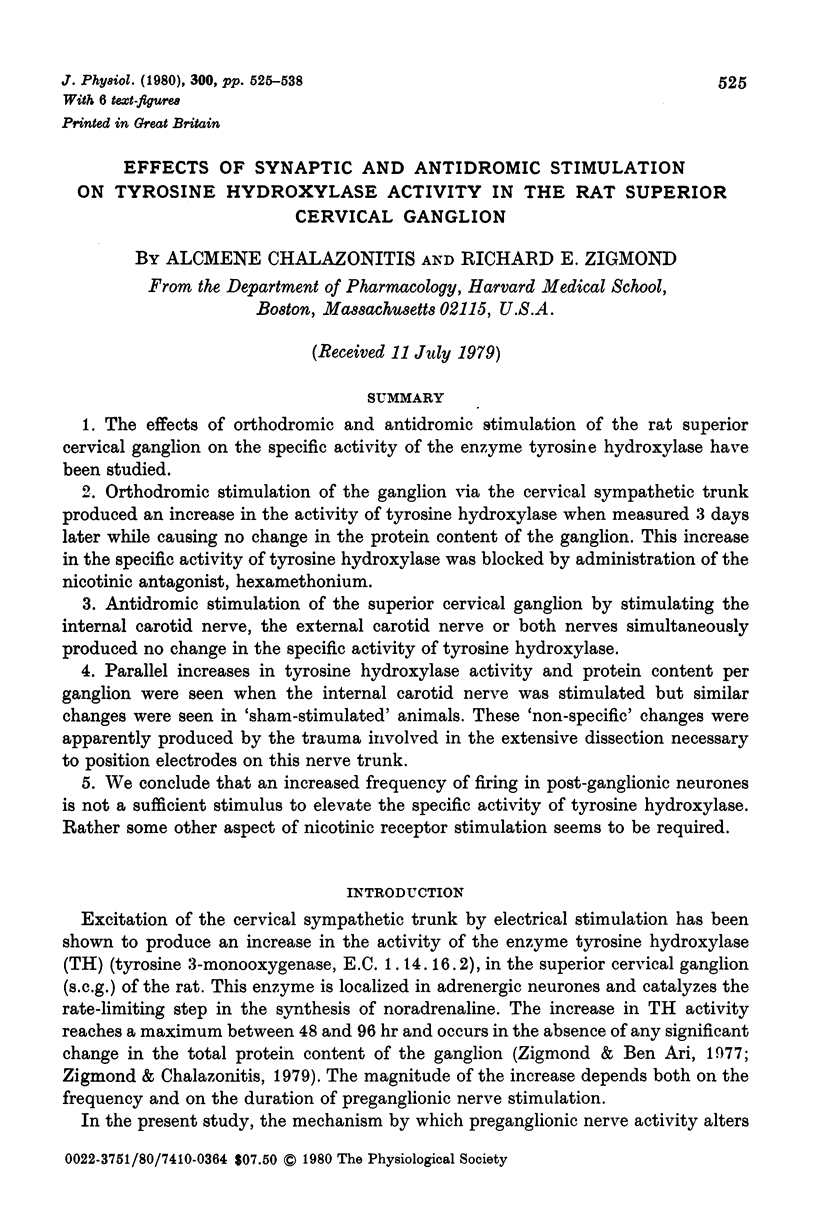
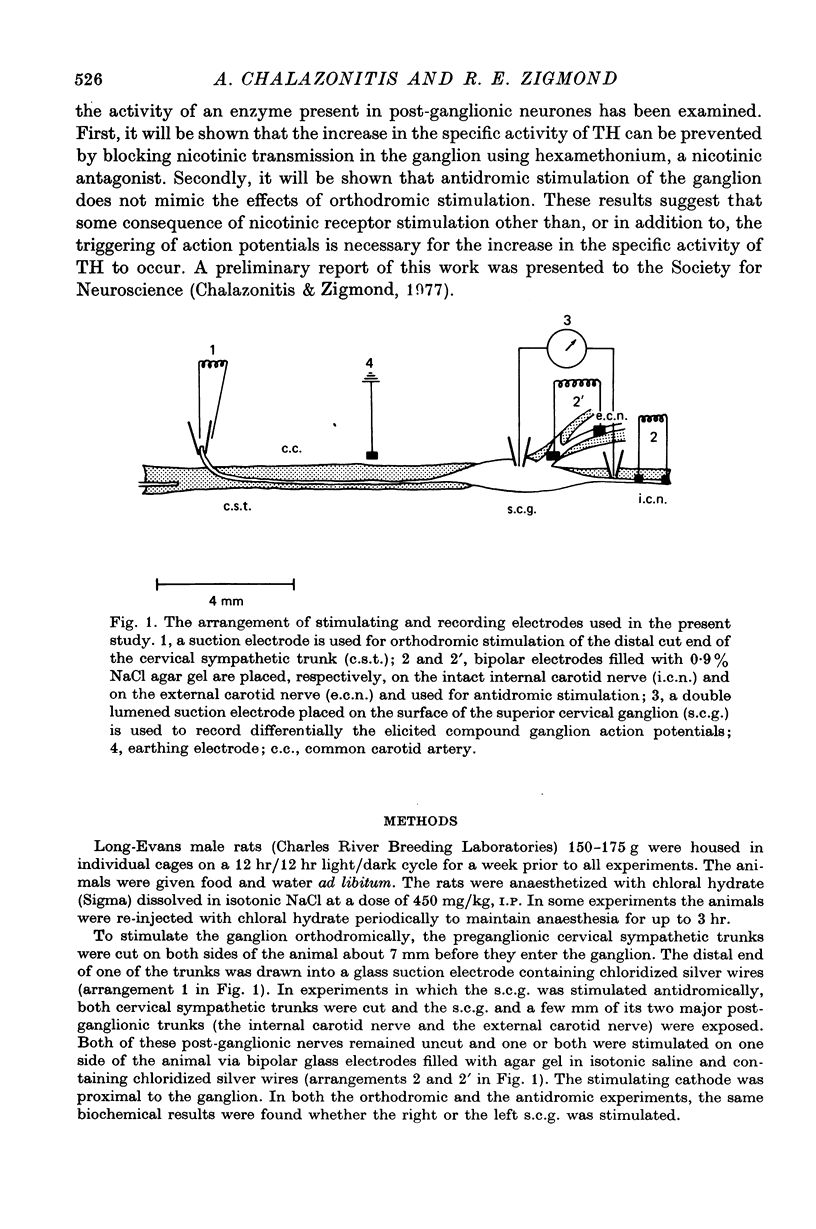
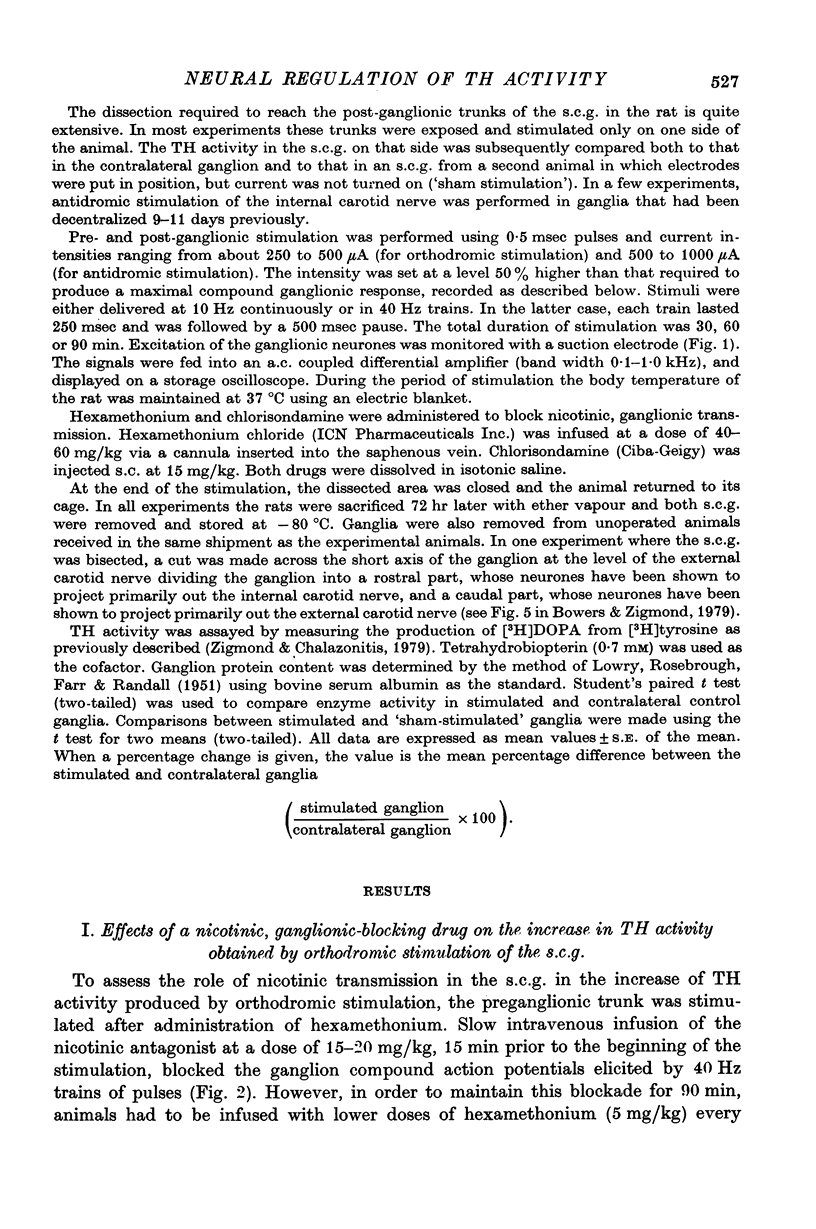
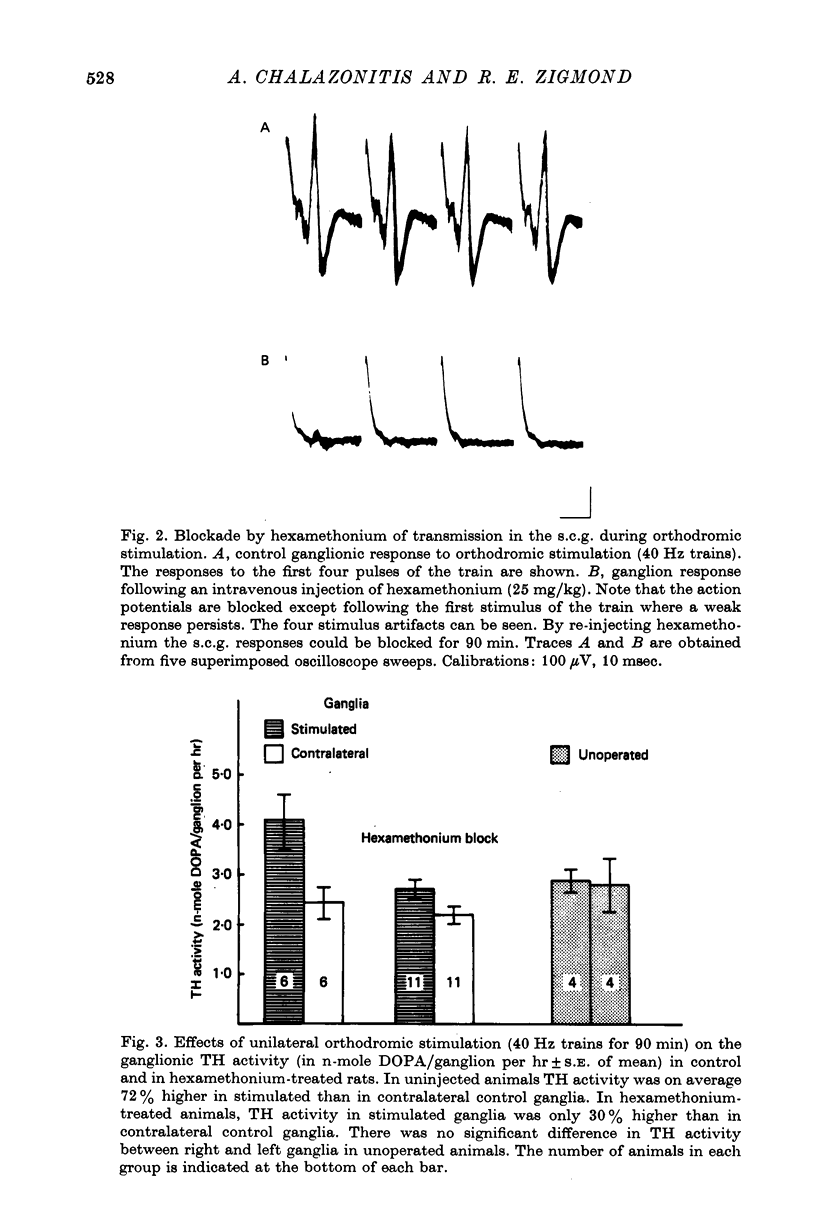
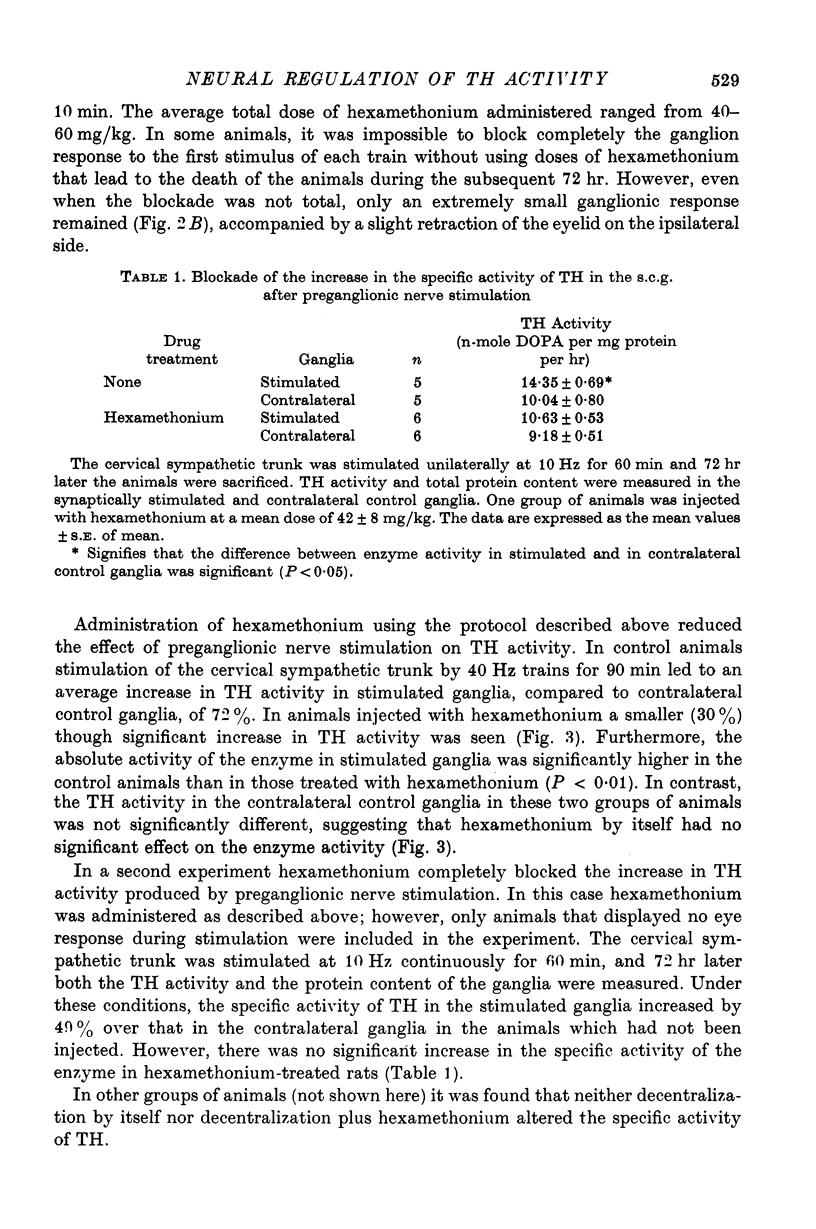
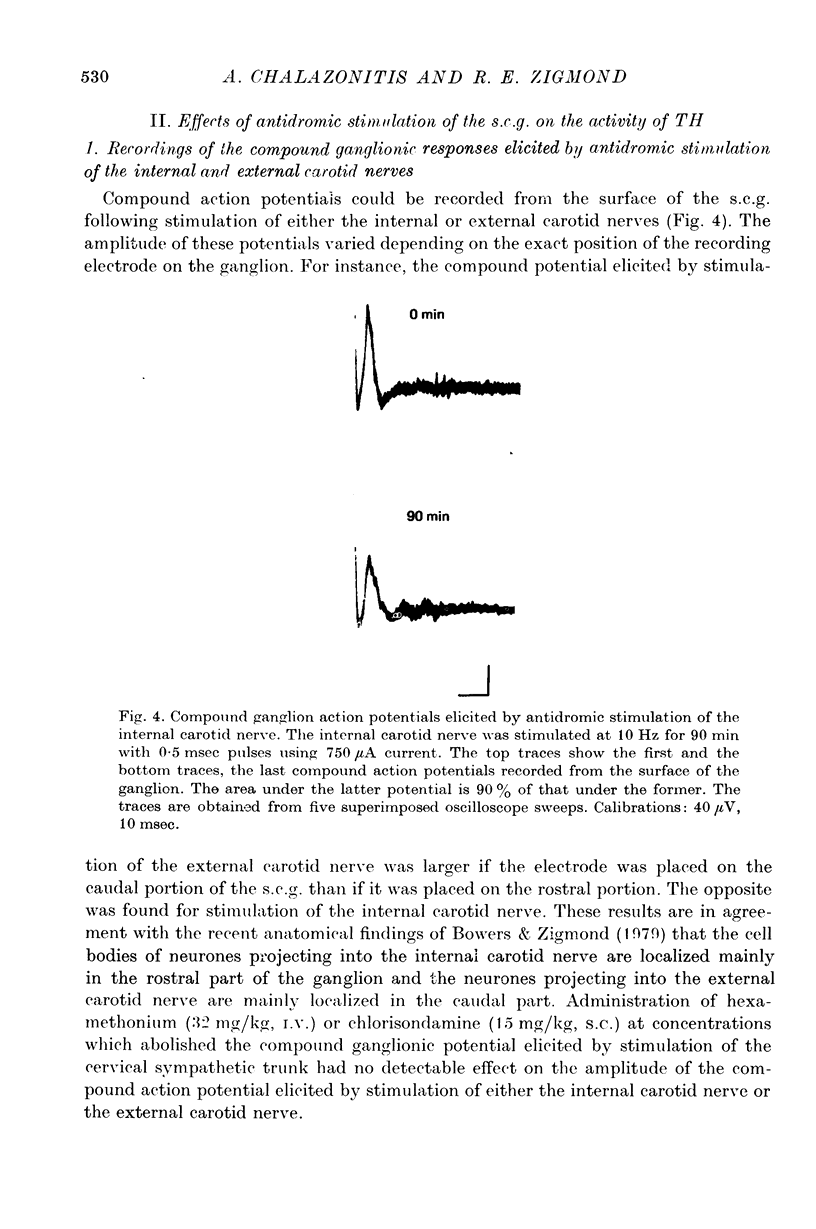
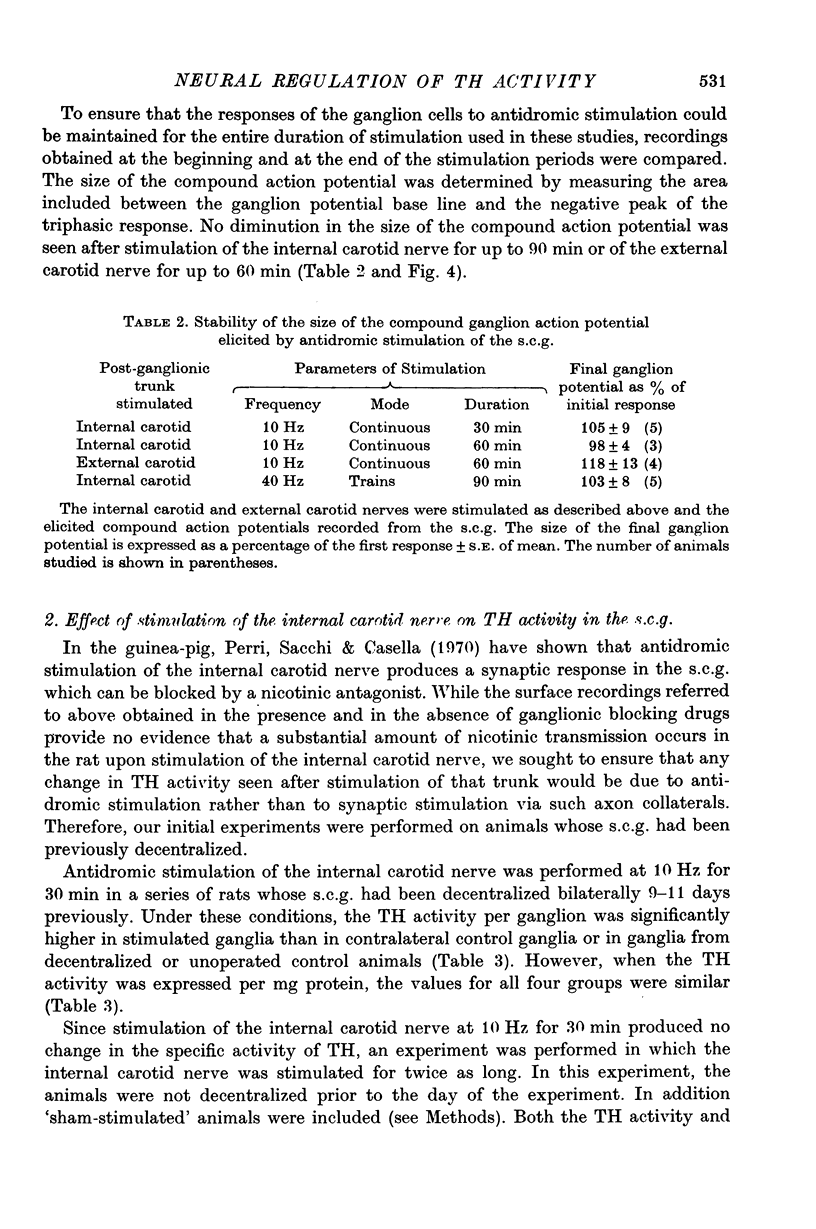
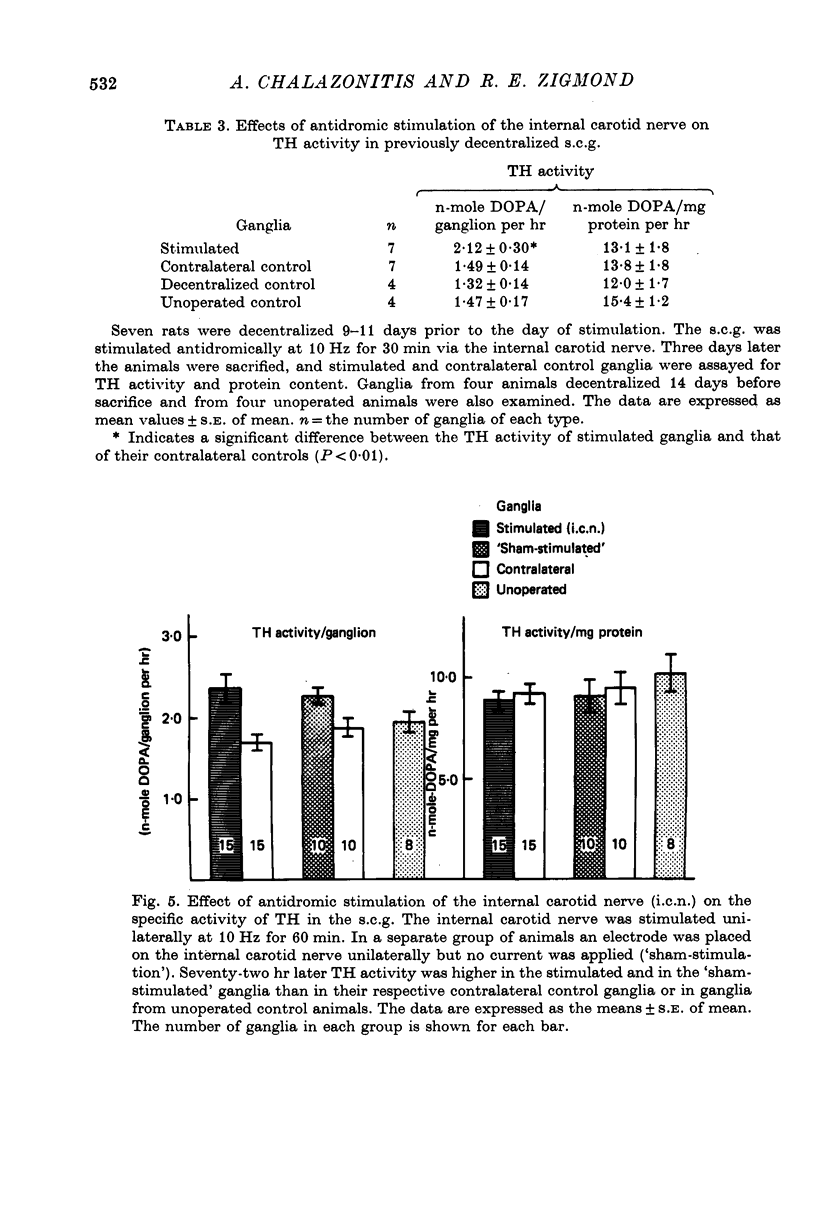
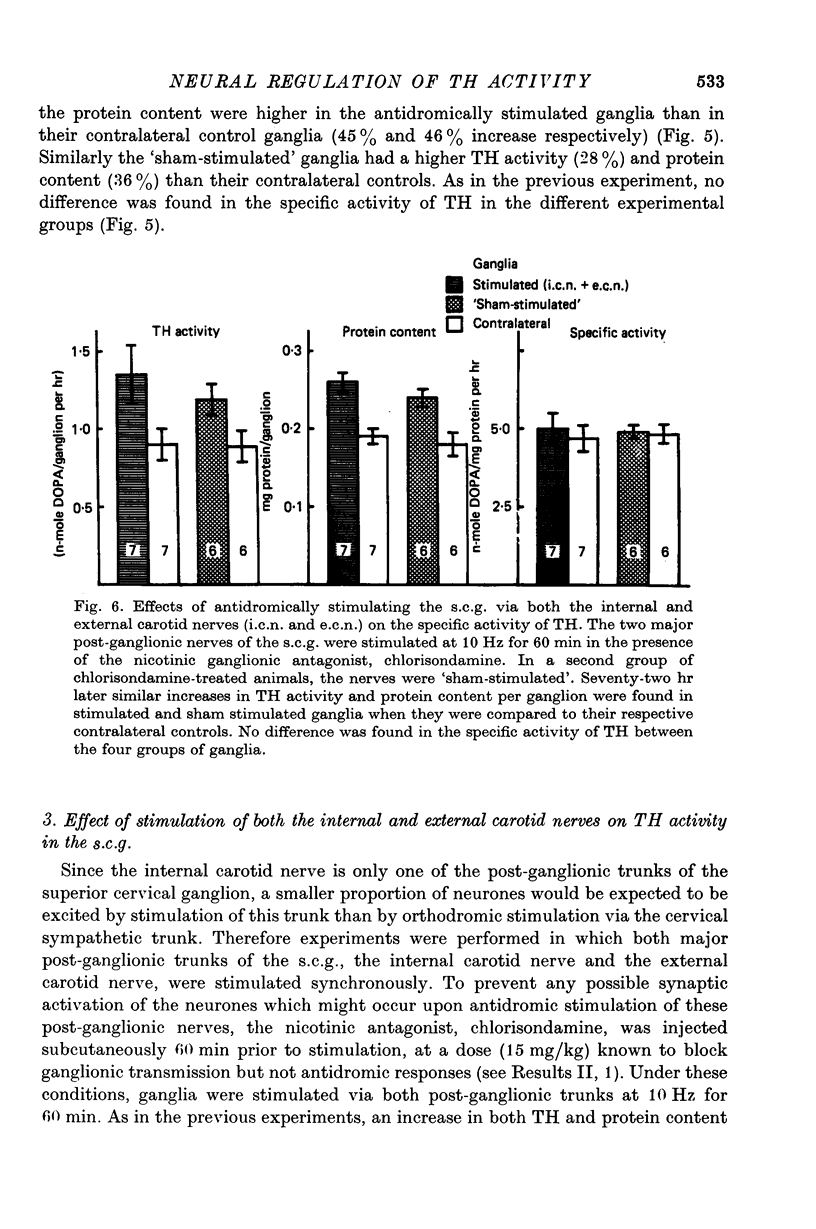
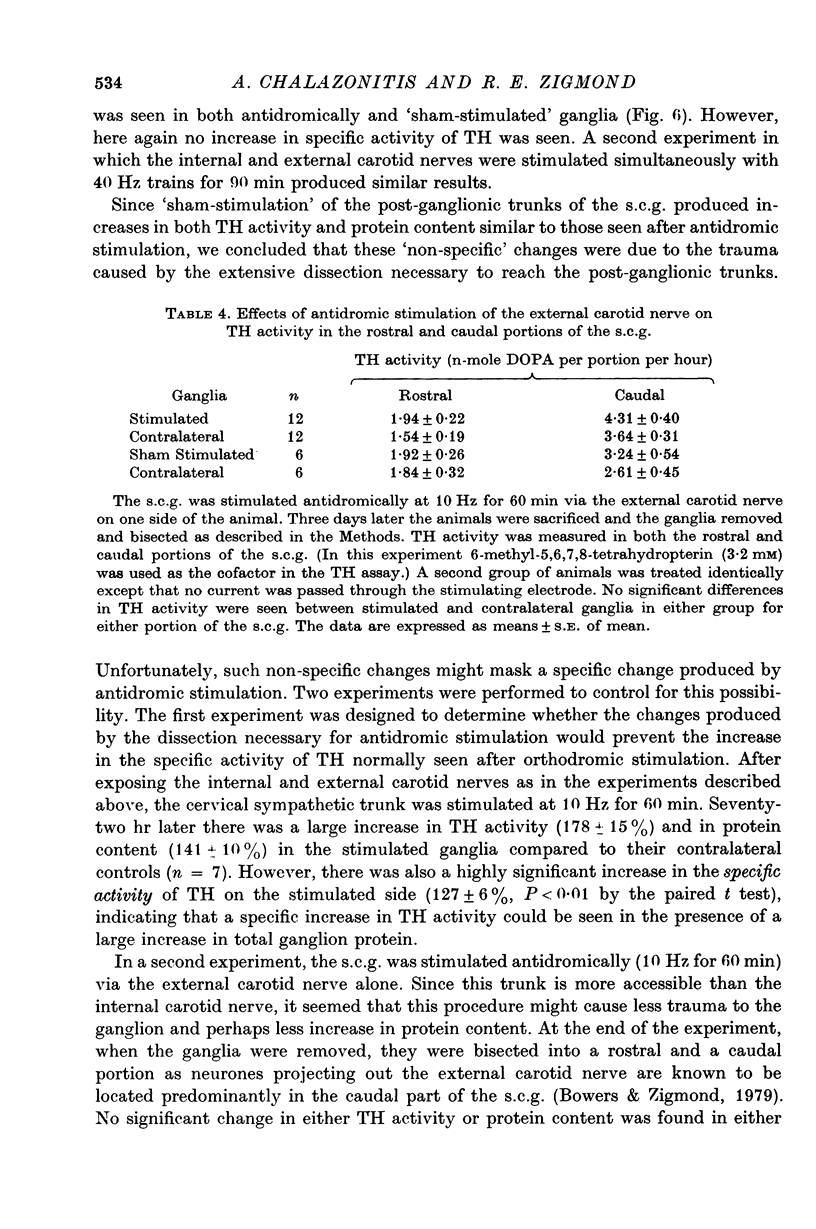
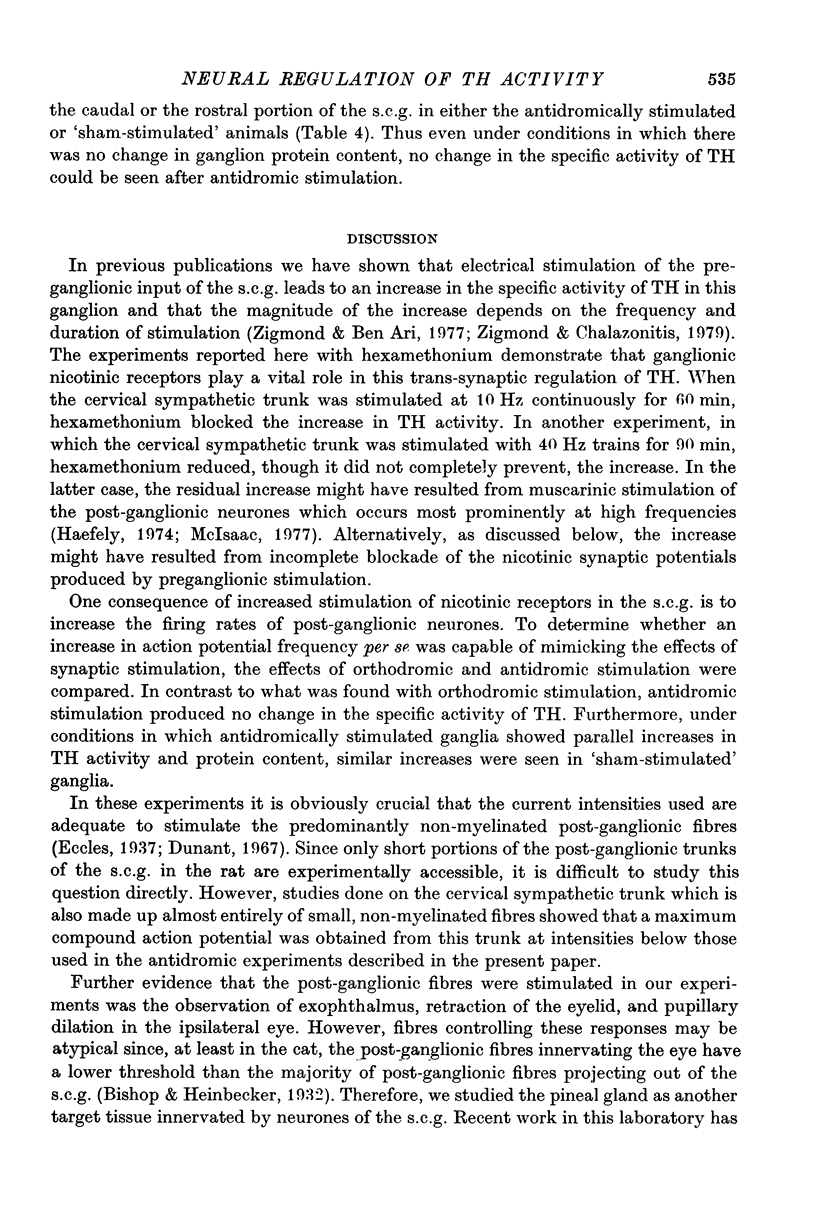
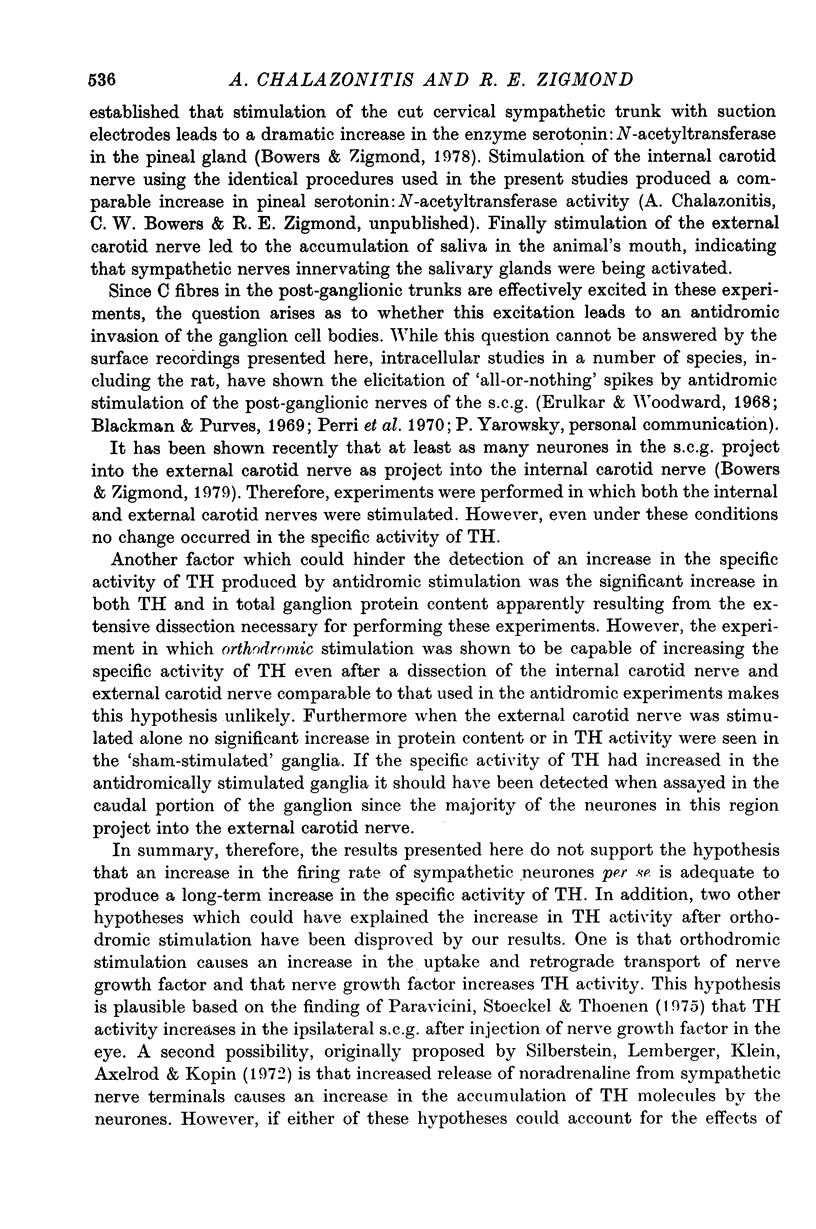
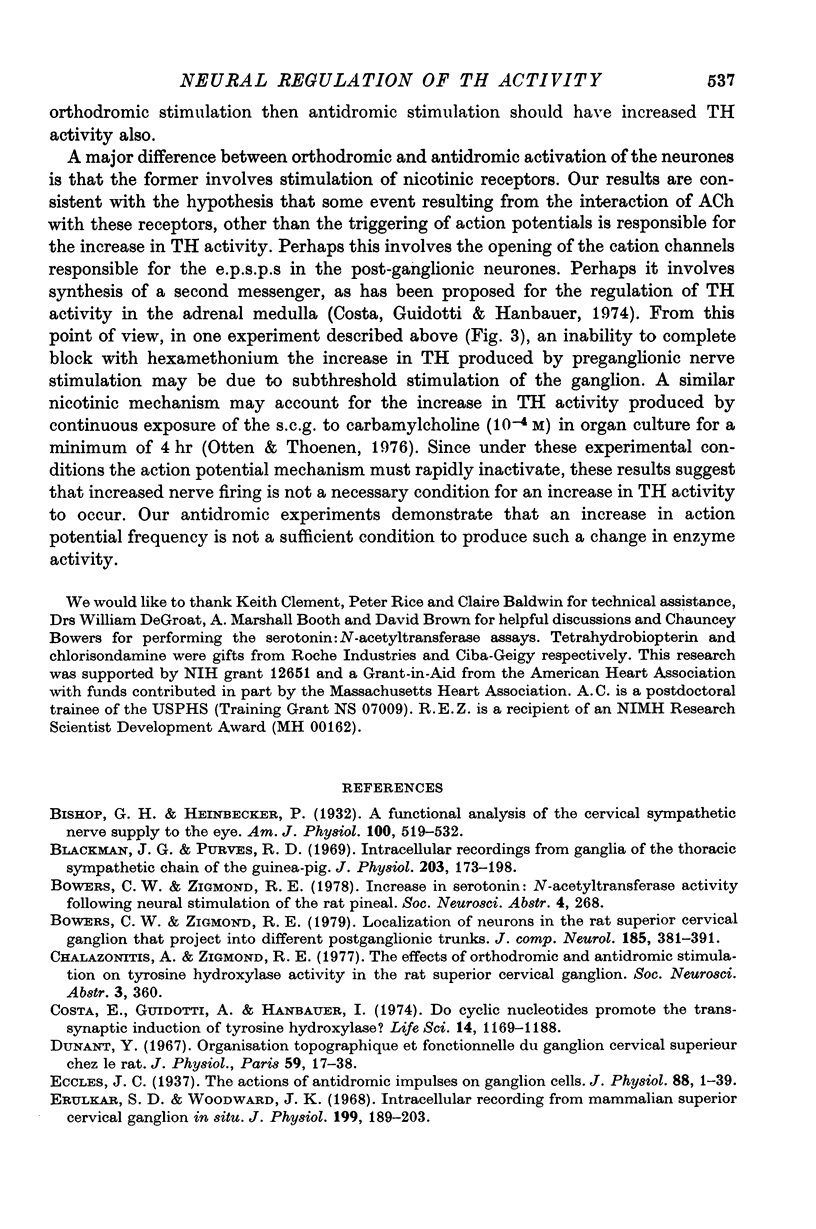
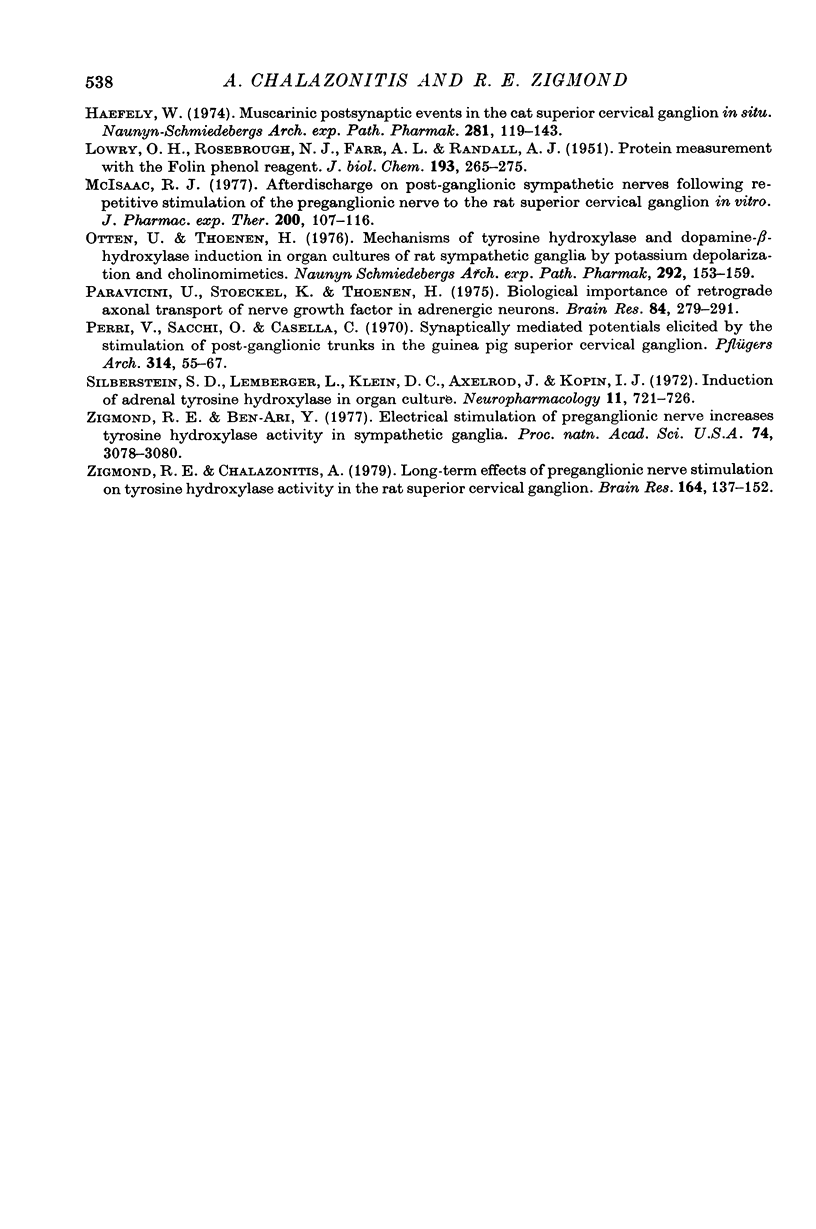
Selected References
These references are in PubMed. This may not be the complete list of references from this article.
- Blackman J. G., Purves R. D. Intracellular recordings from ganglia of the thoracic sympathetic chain of the guinea-pig. J Physiol. 1969 Jul;203(1):173–198. doi: 10.1113/jphysiol.1969.sp008858. [DOI] [PMC free article] [PubMed] [Google Scholar]
- Bowers C. W., Zigmond R. E. Localization of neurons in the rat superior cervical ganglion that project into different postganglionic trunks. J Comp Neurol. 1979 May 15;185(2):381–391. doi: 10.1002/cne.901850211. [DOI] [PubMed] [Google Scholar]
- Costa E., Guidotti A., Hanbauer I. Do cyclic nucleotides promote the trans-synaptic induction of tyrosine hydroxylase? Life Sci. 1974 Apr 1;14(7):1169–1188. doi: 10.1016/0024-3205(74)90425-1. [DOI] [PubMed] [Google Scholar]
- Dunant Y. Organisation topographique et fonctionnelle du ganglion cervical supérieur chez le Rat. J Physiol (Paris) 1967 Jan-Feb;59(1):17–38. [PubMed] [Google Scholar]
- Eccles J. C. The actions of antidromic impulses on ganglion cells. J Physiol. 1936 Oct 16;88(1):1–39. doi: 10.1113/jphysiol.1936.sp003420. [DOI] [PMC free article] [PubMed] [Google Scholar]
- Erulkar S. D., Woodward J. K. Intracellular recording from mammalian superior cervical ganglion in situ. J Physiol. 1968 Nov;199(1):189–203. doi: 10.1113/jphysiol.1968.sp008648. [DOI] [PMC free article] [PubMed] [Google Scholar]
- Haefely W. Muscarinic postsynaptic events in the cat superior cervical ganglion in situ. Naunyn Schmiedebergs Arch Pharmacol. 1974;281(2):119–143. doi: 10.1007/BF00503494. [DOI] [PubMed] [Google Scholar]
- LOWRY O. H., ROSEBROUGH N. J., FARR A. L., RANDALL R. J. Protein measurement with the Folin phenol reagent. J Biol Chem. 1951 Nov;193(1):265–275. [PubMed] [Google Scholar]
- McIsaac R. J. Afterdischarge on postganglionic sympathetic nerves following repetitive stimulation of the preganglionic nerve to the rat superior cervical ganglion in vitro. J Pharmacol Exp Ther. 1977 Jan;200(1):107–116. [PubMed] [Google Scholar]
- Otten U., Thoenen H. Mechanisms of tyrosine hydroxylase and dopamine beta-hydroxylase induction in organ cultures of rat sympathetic ganglia by potassium depolarization and cholinomimetics. Naunyn Schmiedebergs Arch Pharmacol. 1976;292(2):153–159. doi: 10.1007/BF00498586. [DOI] [PubMed] [Google Scholar]
- Paravicini U., Stoeckel K., Thoenen H. Biological importance of retrograde axonal transport of nerve growth factor in adrenergic neurons. Brain Res. 1975 Feb 7;84(2):279–291. doi: 10.1016/0006-8993(75)90982-8. [DOI] [PubMed] [Google Scholar]
- Perri V., Sacchi O., Casella C. Synaptically mediated potentials elicited by the stimulation of post-ganglionic trunks in the guinea-pig superior cervical ganglion. Pflugers Arch. 1970;314(1):55–67. doi: 10.1007/BF00587046. [DOI] [PubMed] [Google Scholar]
- Silberstein S. D., Lemberger L., Klein D. C., Axelrod J., Kopin I. J. Induction of adrenal tyrosine hydroxylase in organ culture. Neuropharmacology. 1972 Sep;11(5):721–726. doi: 10.1016/0028-3908(72)90081-0. [DOI] [PubMed] [Google Scholar]
- Zigmond R. E., Ben-Ari Y. Electrical stimulation of preganglionic nerve increases tyrosine hydroxylase activity in sympathetic ganglia. Proc Natl Acad Sci U S A. 1977 Jul;74(7):3078–3080. doi: 10.1073/pnas.74.7.3078. [DOI] [PMC free article] [PubMed] [Google Scholar]
- Zigmond R. E., Chalazonitis A. Long-term effects of preganglionic nerve stimulation on tyrosine hydroxylase activity in the rat superior cervical ganglion. Brain Res. 1979 Mar 23;164:137–152. doi: 10.1016/0006-8993(79)90011-8. [DOI] [PubMed] [Google Scholar]


